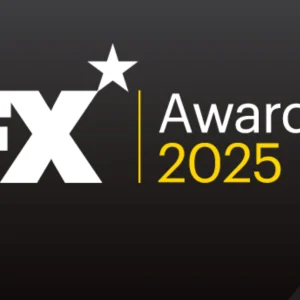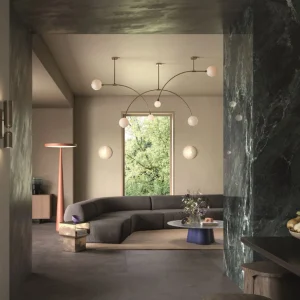The United Arab Emirates (UAE) is spectacular to behold, yet with carbon dioxide emissions double that of the US, it is hardly the world’s most green-friendly nation. With an annual per capita CO2 emissions figure of 50 tonnes, when the world average is four tonnes, the UAE has its work cut out to rectify the situation.
Of the UAE’s seven emirates, Dubai seems to have grasped the mettle with a manic zeal. The place is a veritable building site (think Dallas on speed), with one in six of the world’s cranes within the state’s borders. Dubai features the (soon-to-be-completed) tallest building in the world, and within the next decade will boast a taller building still. Indeed, word has it that even that may be eclipsed, meaning the world’s three tallest buildings could be located in Dubai by 2025.
Under Dubai’s strategic plan 2015, all new buildings and extensions to existing property must comply with ecologically-aware building principles that need to be certified by the Middle East Centre for Sustainable Development (MECSD), the equivalent of the US Green Building Council’s LEED rating system – LEED being the acronym for Leadership in Energy and Environment Design.
Pacific Control Systems, an ISO 9001:2000 organisation, is ready to point the way.
The company provides total automation solutions globally, offering a range of products and solutions that are internet-ready and can seamlessly integrate into existing IT infrastructures, enabling global connectivity that results in continuous energy management services.
Green HQ
Its headquarters building, located in Dubai’s Techno Park, is setting the environmental standard in the Middle East. Pacific is the developer, owner and occupier of this facility, the first platinum-rated green building accredited by the USGBC LEED programme anywhere in the region and only the 16th in the world.
The five-storey building gathered 55 points in achieving the LEED certification. Key environmentally-friendly design and engineering attributes include an integrated IP-enabled automation system, sustainable site development, water and energy efficiency, recycled and recyclable materials selection, and high standards of indoor air quality, leading to improved staff health, comfort and productivity.
Covering an area of 18,500 sq m, Pacific’s building is an exemplar for demonstrating solar thermal power to drive 100 tonnes of low-energy air conditioning, the 60kW use of photovoltaic solar energy for lighting the building, and waste water treatment plant recycling for all water used in the building.
The energy-efficient air-conditioning system involves a solar-powered vapour absorption chiller and energy-efficient screw chillers acting with a thermally-efficient building shell. This is estimated to reduce fuel consumption in the building by 40-50 per cent. A specially designed glass facade has reduced the heat load on the air-conditioning system, reducing energy consumption further.
Roof-mounted photovoltaic solar panels linked to six intelligent inverters convert sunlight into sufficient electrical power for the lighting system. Energy efficiency is enhanced by the use of PIR (passive infrared) detectors on every floor, which turn on the lighting only when required.
All the building systems – including HVAC, access controls, CCTV, fire alarms, audiovisual equipment, chillers, lighting and power – function on an IP-enabled automation and control system.
This is powered by the Tridium Niagara Framework, a middleware framework which is specifically designed to address the challenges of building device-to-enterprise applications, internet-enabled products and internet-based automation systems. Niagara creates a common environment that connects to most embedded devices, regardless of manufacturer or communication protocol.
The core concept of the Framework is its (patented) component model that transforms the data from diverse external systems into uniform software components. These components form the foundation for building applications to manage and control the devices. Niagara allows energy consumption to be monitored and tracked in real time to ensure that consumption is optimised, targeted consumption and maintenance costs are achieved, and system reliability is maximised.
Local waste water recycling has reduced the amount of water drawn from the city’s water supply (water is a precious – and expensive – commodity in this part of the world). Other environmental features include the use of materials with a high recycled content, variable speed drives for centrifugal fans and pumps, carbon dioxide monitoring for indoor air quality, low volatile organic compounds (VOCs) in carpets, adhesives, sealants and paints, and the use of eco-friendly housekeeping chemicals in building maintenance.
Other beneficiaries
The building is also the base for:
- An R&D centre serving as the centre of excellence for automation business in the Middle East region, along with eco-friendly automation solutions and products for global markets
- A 24/7 command control centre providing services for monitoring and control of assets and buildings across the world for government and private sector clients
- The Dubai Civil Defence control centre for monitoring buildings for fire or elevator alarms round the clock in real time via the internet.
Regarding the latter, Pacific Controls, utilising Honeywell security products and Tridium controls technology powered by the Niagara Framework, is offering an e-monitoring solution for the civil defence operation, which will be installed in every government and private building. So far 220 have been hooked up, and alarm systems will be installed in the 60,000 remaining buildings across the emirate in the next five years. The control room is to be relocated to the civil defence’s new headquarters building in 2009.
The energy services global command control centre operates on Tridium controls infrastructure technology. The centre offers Pacific’s customers, business partners, government and international agencies the ability to carry out real-time measurement and verification of the carbon footprint of homes, buildings and infrastructure, wherever they are located in the world. The service is also designed as a back-office facility for UK facilities management and maintenance companies seeking to offer these services to their customers without having to invest in setting up and running their own dedicated control centre.
Pacific has deployed its custom-built, high-performance software platform using the Niagara technology to offer the new services and create a global energy management infrastructure for smart buildings. Information on building services operation can be provided in real time over the internet, by means of seamless connections between Pacific data centre facilities in New York, London, New Delhi, Singapore and Sydney. The company has acquired rack space in data centres in each of these cites to locate its IT and communications equipment.
This set-up enables the company to manage and perform energy services in real time for its clients from the Dubai centre. Available services include: energy information; carbon footprint measurement; energy benchmarking; energy efficiency advisory services; annual energy budgeting and targeting; energy efficiency mapping; energy efficiency measurement and retrofits.
For those organisations requiring managed energy services (enabling 24/7×365 monitoring, measurement and verification), the service will enable Pacific Controls to reduce energy consumption in the assets by up to 20 per cent.
The cost of building Pacific’s head-quarters was up to 30 per cent more compared to the traditional approach, but the cost of maintaining it over a 20-year period is expected to be 50 per cent less. The extra money will be recovered many times over during the life of the building.
A vision of convergence
What this building represents is one successful outcome of the vision of intertwining buildings with internet technologies. Pacific Controls and Tridium have made great progress in enabling the convergence of building automation systems and the communications and IT infrastructure – with the Internet Protocol (IP) as the key component.
Elsewhere, Cisco has proved a catalyst in raising awareness of this convergence with its connected real estate initiative. At a recent Cisco Networkers event in Barcelona, CommScope, the provider of infrastructure solutions for communication networks, referred to this concept as ‘intelligent building infrastructure systems’ (IBIS).
This is all hopeful stuff. Pacific and Tridium have kicked off in style. IP has demonstrated how the power of the network can produce untold opportunities – now is the time to see them put to work in real-life buildings.
This piece was first published in FMX Magazine





